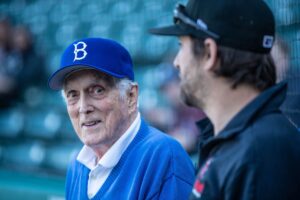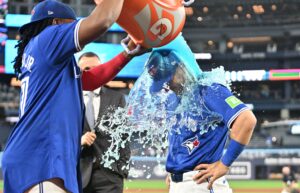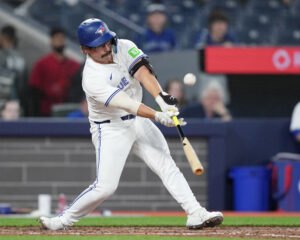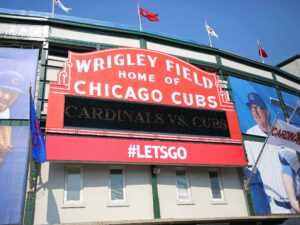Making a bid for a postseason appearance, the Milwaukee Brewers were active at the 2018 Trade Deadline. One of the players the team brought in was second baseman, Jonathan Schoop. Schoop was acquired from the Baltimore Orioles in exchange for a package of Jonathan Villar and minor-leaguers Luis Ortiz and Jean Carmona. The Brewers ultimately fell one win shy of a World Series appearance, but Schoop did little to nothing in helping them get that far. The team now has to decide if he’ll even be a member of next season’s roster.
The Milwaukee Brewers Face a Decision with Jonathan Schoop
When the Brewers acquired Schoop, he was in the midst of a down season. He posted a .720 OPS and 91 wRC+ in 85 games with the Orioles. However, Schoop went on a tear in his final week in Baltimore. He crushed 7 home runs in 43 plate appearances, slugging .840 with a robust 1.209 OPS during that short span. The Brewers were taking a chance and hoping that Schoop’s surge was a sign of things to come.
However, Schoop crumbled the instant put on a Milwaukee uniform. He played in 46 games, and in 134 plate appearances, he limped to a .577 OPS and a horrific 50 wRC+. The most concerning part of his sudden collapse was that he began striking out at rates he had never before approached. Schoop’s career strikeout rate is 22.6%, and it was at 20.2% with the Orioles this season. After the trade, Schoop whiffed in a whopping 30.6% of his trips to the plate, a massive spike from his career norms.
Schoop is arbitration eligible this offseason, with MLB Trade Rumors projecting him to make approximately $10 million. Any player eligible for arbitration can be non-tendered by their club and become a free agent. Based on these comments by General Manager David Stearns, there doesn’t seem to be much of a guarantee that Schoop will be back next season.
As for Jonathan Schoop’s future with the #Brewers, Stearns said “that’s a discussion we’re going to continue to have.”
— Tom (@Haudricourt) October 23, 2018
The Brewers have a decision to make regarding Schoop’s future. The biggest question they have to answer is if they believe Schoop can bounce back from his dreadful season.
The Argument for Keeping Schoop
Schoop has had success in the past. He smashed 32 home runs with the Orioles in 2017. As was mentioned before, his strikeout rate with the Brewers was shockingly higher than his career rate; it’s likely that his strikeout rate will trend back toward his career average. Schoop is entering his age-27 season, putting him in the age range of a typical player’s peak seasons. It’s entirely possible that Schoop figures something out and puts up career-best numbers next season.
Another reason for keeping Schoop around is the uncertainty surrounding the second base position in Milwaukee. Top prospect Keston Hiura figures to start next season in Triple-A, and fellow prospect Mauricio Dubon looked ready for the big leagues before tearing his ACL. Both players could very well make an impact next season, but handing the keys to a starting job to players who have yet to play in a big-league game is risky. Schoop at least provides a track record of some past success.
The Argument for Cutting Schoop
While it’s possible that Schoop’s best days are ahead of him, it’s also very possible that he’s peaked as a player.
Throughout his entire career, Schoop has had awful plate discipline. He’s walked in just 3.7% of his plate appearances for his career. Schoop debuted in 2013, and his walk rate is the fourth-lowest in all of baseball in that span. To put it frankly, Schoop’s inability to draw walks is nothing short of awful. For his career, Schoop has swung at a whopping 41% of the pitches he has seen outside of the strike zone. That’s the 12th-highest rate in baseball over that span.
After seeing those numbers, it should come as no shock that Schoop has always done an incredibly poor job of getting on base. He carries a putrid .294 OBP for his career. The inability to get on-base has held Schoop back throughout his entire career. Despite having hit 21 or more home runs in each of the past three seasons, Schoop has been a slightly below-average hitter for his career, with a 97 wRC+.
Schoop’s batted ball profile does not inspire confidence. Schoop has a career 30.4% hard contact rate. He’s had three seasons, including 2018, in which he has made hard contact under 30% of the time. Despite his ability to hit home runs, Schoop actually does not hit the ball hard very often.
Schoop’s only real asset is his home run power. He never draws walks, is horrible at getting on base, and, outside of home runs, doesn’t hit the ball hard. His game relies on one tool; if that one tool is not at its peak, Schoop provides next to no value.
Should the Brewers Keep Schoop?
It’s more likely than not that Schoop won’t be as poor as he was in 2018. However, he has some clear flaws in his game, and those flaws make his great 2017 look like more of an outlier, not a level that the Brewers should expect him to return to.
Schoop is basically a league-average hitter, and his home run power is the only substantial way he generates value. For a small-market team like the Brewers, it’s important to get as much production as possible for your money. Investing $10 million in a one-dimensional player like Schoop is very risky.
Ultimately, it comes down to what the Brewers think Schoop is capable of moving forward. Unfortunately, there are more negative indicators than positive ones in Schoop’s case. David Stearns’ comments make it sound like the Brewers realize they have to think this decision through, which could indicate some uncertainty about Schoop’s ability. There’s a very real chance that Schoop does not don a Brewer uniform next season.
Embed from Getty Images






